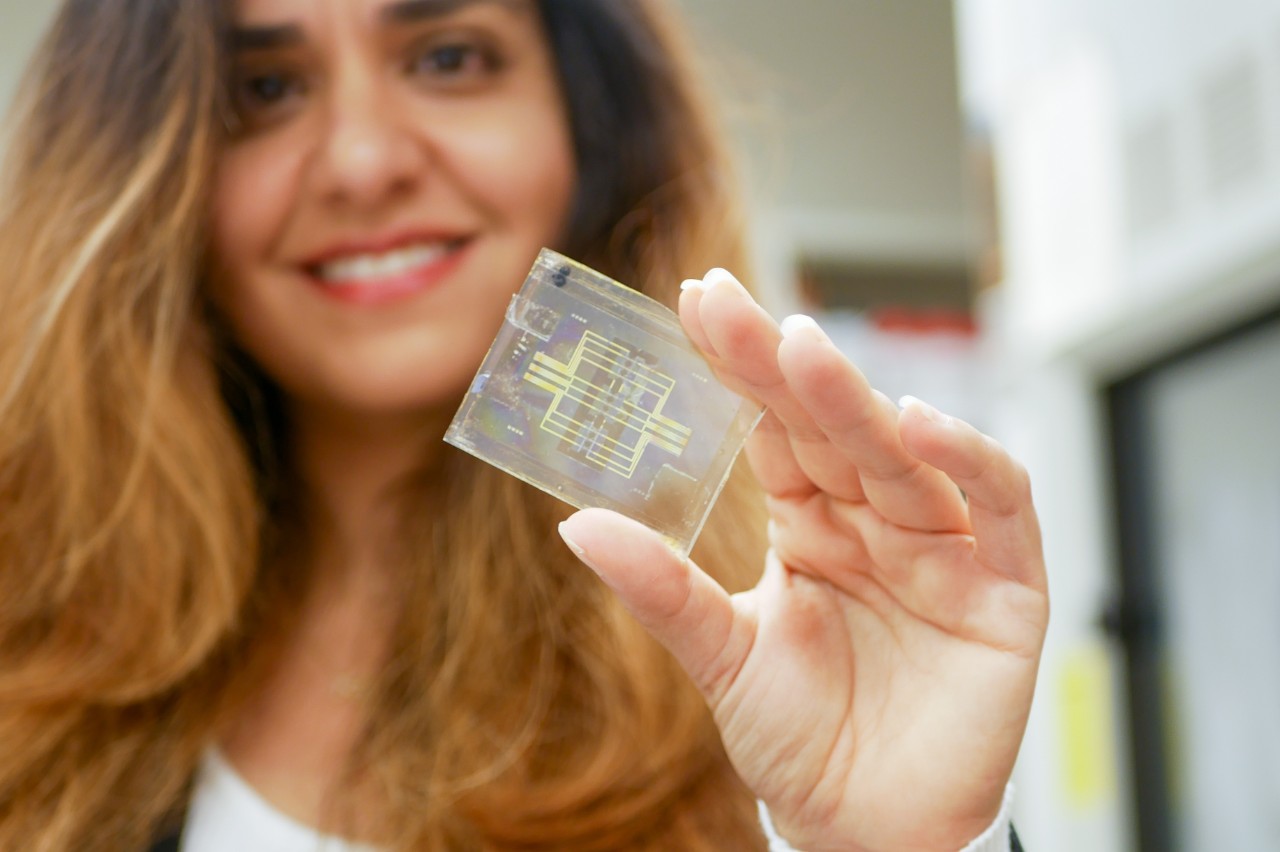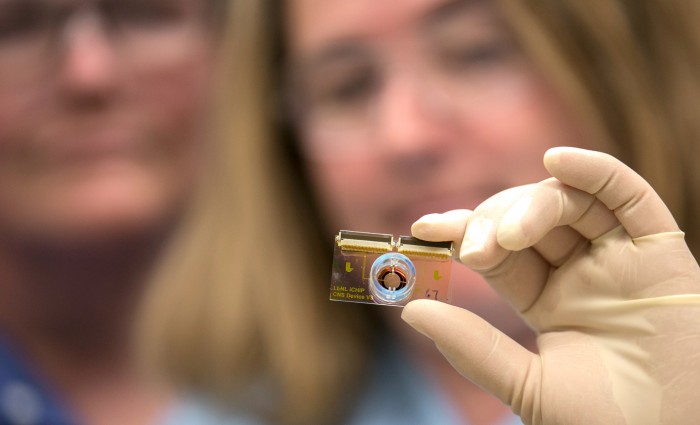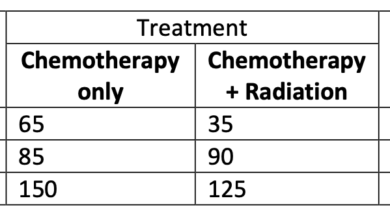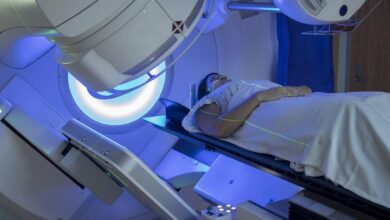
Human on a chip technology can test cancer treatments, offering a revolutionary approach to drug development and personalized medicine. This innovative technology creates miniature, human-like models that can simulate complex biological processes, including the growth and behavior of cancer cells. Imagine a world where we can test new cancer treatments in these intricate, personalized models before moving to costly and time-consuming animal trials.
This opens up possibilities for faster, more effective treatments, and tailored therapies.
This technology uses microfluidic devices and other sophisticated platforms to replicate the human body’s complex cellular interactions. These platforms provide a powerful tool for studying cancer development, drug responses, and treatment efficacy. By understanding how drugs interact with cancer cells in a controlled environment, we can predict their potential effectiveness and identify potential side effects, significantly improving the efficiency of cancer treatment research.
Human-on-a-Chip Technology for Cancer Treatment Testing

Human-on-a-chip technology is revolutionizing the way we study and develop treatments for diseases like cancer. These miniature, lab-grown models of human organs and tissues offer a powerful tool for researchers to test new drugs and therapies in a safe and controlled environment, accelerating the development of effective treatments. By replicating the complex interactions within the human body, human-on-a-chip models provide valuable insights into how diseases progress and how potential treatments might affect the body at a cellular level.This technology provides a more realistic and relevant testing environment compared to traditional methods, like using animal models or cell cultures alone.
The ability to mimic human physiology allows for a deeper understanding of disease mechanisms and the potential side effects of drugs, ultimately leading to safer and more effective treatments for patients.
Different Types of Human-on-a-Chip Platforms
Human-on-a-chip platforms come in various forms, each tailored to specific research needs. The choice of platform depends on the specific biological process being studied. These platforms are crucial for investigating the intricacies of cancer progression and response to treatments.
Human-on-a-chip technology is pretty cool, right? It lets scientists test cancer treatments in a lab setting, mimicking how the human body works. This is super important, because sometimes conditions like endometriosis can be mistaken for something else, like appendicitis, as highlighted in this article about endometriosis mistaken for appendicitis. The ability to precisely simulate human biology with this technology helps researchers understand and develop better treatments for a wider range of conditions, not just cancer.
- Microfluidic devices are widely used for their ability to precisely control the flow of fluids and cells within the chip. They are designed with channels and chambers that mimic the microenvironment of tissues and organs, facilitating the study of cellular interactions and responses to stimuli.
- Organ-on-a-chip platforms aim to recreate the structure and function of entire organs, incorporating multiple cell types and extracellular matrices. These platforms are ideal for modeling complex interactions within organs, including those involved in cancer metastasis and drug distribution.
- 3D bioprinting technologies enable the creation of highly complex and customized tissue structures. These structures can accurately mimic the architecture and cellular organization of tissues, allowing researchers to study cancer growth and responses to treatments in realistic settings.
Basic Principles and Methodologies
Creating human-on-a-chip models involves several key steps. First, cells are carefully selected and cultured to maintain their specific characteristics. Next, these cells are incorporated into the chip’s microenvironment, which includes the necessary nutrients, growth factors, and other signaling molecules to mimic the natural tissue environment. This environment is meticulously controlled to precisely mimic the physiological conditions relevant to the specific research question.
- The chip’s design is crucial to accurately reproduce the microenvironment of the target tissue or organ.
- Various materials are used to create the chip, considering biocompatibility and the ability to support cell growth.
- Advanced techniques, such as microfabrication and 3D bioprinting, are employed to create intricate structures and patterns within the chip.
Comparison of Human-on-a-Chip Platforms for Cancer Research
| Platform Type | Key Components | Advantages | Disadvantages |
|---|---|---|---|
| Microfluidic Device | Channels, chambers, sensors, valves | Precise control over flow, low cost, potential for high throughput | Limited complexity, may not fully replicate tissue structure |
| Organ-on-a-Chip | Multiple cell types, extracellular matrix, organ-specific structures | More realistic representation of organ function, study of complex interactions | Higher cost, more challenging to create and maintain |
| 3D Bioprinted Models | Bioinks, cells, 3D printing technology | Complex tissue structures, mimicking natural architecture, personalization | Costly, limited scalability, potential for variability in printing |
Historical Development of Human-on-a-Chip Technology
Human-on-a-chip technology has experienced significant progress over the past few decades. Early models focused primarily on replicating the microenvironment of tissues and organs. Later developments focused on incorporating more complex cell types and creating more realistic organ-like structures. Current advancements in microfabrication, bioprinting, and materials science are pushing the boundaries of what is possible, opening new avenues for understanding and treating complex diseases.
Modeling Cancer in Human-on-a-Chip Platforms
Human-on-a-chip technology offers a powerful tool for studying cancer and testing treatments in a more realistic setting than traditional methods. By mimicking the complex interactions within the human body, these platforms allow researchers to investigate how cancer cells behave and respond to therapies in a controlled environment. This detailed approach is essential for understanding the intricacies of cancer progression and developing effective strategies for treatment.Modeling cancer within human-on-a-chip platforms involves creating miniature versions of the tumor microenvironment, including the cells and extracellular matrix that surround and influence cancer cells.
This allows for the study of how cancer cells interact with other cells and factors within the body, a crucial aspect of cancer development and response to treatment. This intricate modeling facilitates a better understanding of cancer biology and can significantly improve the efficacy of drug discovery and personalized medicine.
Integrating Cancer Cells into Human-on-a-Chip Models
Cancer cells are integrated into human-on-a-chip models using various techniques, depending on the specific model and the type of cancer being studied. These methods include seeding cancer cells directly onto the microfluidic channels or incorporating them into pre-formed structures, such as 3D spheroids. Careful consideration is given to the density and distribution of cancer cells to ensure accurate representation of the tumor’s spatial organization.
This process also considers the dynamic nature of cancer growth, incorporating factors like cell migration and invasion. The successful integration of cancer cells is a crucial step in establishing a relevant and informative model.
Creating Realistic Tumor Microenvironments
Developing realistic tumor microenvironments is essential for accurate cancer modeling. Several methods are used to recreate the complex interplay of cells and extracellular matrix components. These include using biocompatible materials to form the microenvironment, creating 3D scaffolds that mimic the structure of tissues, and incorporating extracellular matrix proteins to support cell growth and interaction. A critical aspect is the incorporation of immune cells, endothelial cells, and fibroblasts, which play vital roles in the tumor microenvironment and influence the behavior of cancer cells.
The incorporation of these cells allows researchers to model the complex interactions that occur within a tumor, leading to more realistic and informative results.
Different Types of Cancer Cells and Their Requirements
Different types of cancer cells have unique requirements for modeling in human-on-a-chip platforms. For example, breast cancer cells might require specific growth factors or extracellular matrix components to maintain their characteristic morphology and behavior. Similarly, lung cancer cells might need specific oxygen levels and nutrient concentrations to mimic their in vivo environment. This underscores the importance of carefully selecting the appropriate cell lines and conditions for each specific cancer type.
Simulating Complex Interactions
The complexity of interactions between cancer cells and other cells within the microenvironment requires careful simulation. Models should incorporate the effects of cell-cell signaling, nutrient gradients, and the presence of inflammatory mediators. This requires the integration of multiple cell types and the precise control of their interactions within the microfluidic channels. These sophisticated models allow researchers to study the effects of various treatments on the tumor microenvironment and its influence on cancer cells.
Strengths and Weaknesses of Cancer Cell Models
| Model Type | Strengths | Weaknesses |
|---|---|---|
| 3D Spheroids | Mimics tumor structure and cellular interactions; allows for the study of tumor heterogeneity; relatively simple to generate | Limited scalability; may not accurately represent the complex architecture of a solid tumor; may not fully recapitulate the dynamic nature of the tumor microenvironment |
| Microfluidic Devices | Enables dynamic control of microenvironment parameters; allows for precise delivery of drugs and other stimuli; high degree of control over cell interactions | Can be technically challenging to fabricate; may not fully recapitulate the 3D complexity of tumors; requires expertise in microfluidics |
| Organ-on-a-Chip | Mimics the complex architecture of tissues and organs; allows for studying drug efficacy in a more physiological context; can integrate different cell types | High complexity in fabrication; requires detailed knowledge of organ-specific microenvironments; can be expensive to develop and operate |
Testing Cancer Treatments on Human-on-a-Chip Models

Human-on-a-chip technology offers a revolutionary approach to testing cancer treatments. These miniature, physiologically relevant models of human tissues and organs allow researchers to study the complex interactions between cancer cells and treatment agents in a controlled environment. This approach promises to reduce the reliance on animal models and significantly accelerate the development of more effective and personalized cancer therapies.Testing cancer treatments in human-on-a-chip models offers numerous advantages over traditional methods.
It allows for the study of drug efficacy, side effects, and drug resistance in a more realistic context than in animal models or cell cultures alone. This leads to potentially more accurate predictions of how a treatment will perform in human patients.
Different Types of Cancer Treatments Testable
Various cancer treatments can be evaluated using human-on-a-chip models. These include chemotherapy, targeted therapies, immunotherapy, and radiation therapy. The specific treatment type influences the design of the human-on-a-chip model to ensure accurate representation of the targeted biological mechanisms. For instance, models designed to study the efficacy of targeted therapies might incorporate cells with specific genetic mutations relevant to the target.
Drug Delivery Systems Simulated
Human-on-a-chip platforms can simulate various drug delivery systems, providing insights into how drugs reach and interact with cancer cells. Examples include:
- Oral drug delivery: Models incorporating the gastrointestinal tract can simulate the absorption, metabolism, and distribution of orally administered drugs.
- Intravenous drug delivery: Models can simulate the circulation of drugs in the bloodstream and their subsequent interaction with tumor cells.
- Targeted drug delivery: Models can investigate the efficacy of drug delivery systems that target specific cancer cells, such as liposomes or nanoparticles.
These simulations help optimize drug formulations and delivery methods to improve treatment effectiveness and minimize side effects.
Evaluating Treatment Efficacy
Several methods are employed to assess the efficacy of different treatment strategies in human-on-a-chip models. These include measuring cell viability, apoptosis (programmed cell death), and changes in gene expression. Sophisticated imaging techniques, like fluorescence microscopy, can provide real-time visualization of drug effects within the model.
Analyzing Drug Responses and Resistance, Human on a chip technology can test cancer treatments
Human-on-a-chip models can analyze drug responses and resistance mechanisms. By tracking changes in cell growth, migration, and gene expression after treatment, researchers can identify potential drug resistance pathways. The models can also be used to assess the impact of different treatment combinations on cancer cells, providing a platform to develop novel therapeutic strategies.
Table Comparing Treatment Efficiency
The following table provides a comparative analysis of treatment efficiency in various human-on-a-chip models. Note that specific performance metrics will vary based on the model design and the specific cancer type being studied.
| Treatment Type | Model Performance | Key Observations |
|---|---|---|
| Chemotherapy | High efficacy against specific cell types with certain genetic mutations; slower efficacy against others | Significant side effects on healthy cells; potential for drug resistance development |
| Targeted Therapy | High efficacy against cancer cells with specific genetic mutations; minimal impact on healthy cells | Potential for resistance to targeted therapies through mutations in the targeted pathways; treatment response variability based on genetic background |
| Immunotherapy | Promising results in activating anti-tumor immune responses | Limited efficacy in certain cancer types; need for personalized approaches to enhance immune response |
Advantages and Limitations of Human-on-a-Chip Technology
Human-on-a-chip technology, a promising advancement in biomedical research, offers a novel approach to studying complex biological processes, including cancer development and treatment response. This microfluidic platform mimics the intricate environment of human tissues and organs, enabling researchers to investigate disease mechanisms and test therapeutic interventions in a controlled and more physiologically relevant setting than traditional methods. However, despite its potential, the technology is not without limitations.
Human on a chip technology is amazing, allowing researchers to test cancer treatments in a more realistic environment than ever before. This cutting-edge technology has the potential to revolutionize cancer treatment, but it’s not the only frontier in healthcare innovation. For example, exploring different therapies for conditions like insomnia, like fighting insomnia with therapy , also holds promise for improving patient outcomes.
Ultimately, these advancements in human on a chip technology and other areas of healthcare research are vital to developing better treatments for various diseases.
Understanding these advantages and disadvantages is crucial for harnessing the full potential of human-on-a-chip technology in cancer research and treatment.The key advantage of human-on-a-chip technology lies in its ability to create a more realistic model of human biology compared to traditional in vitro models. This enhanced realism stems from the ability to mimic cellular interactions, tissue architecture, and extracellular matrix, thereby providing a more comprehensive understanding of complex biological processes.
Advantages of Human-on-a-Chip Technology in Cancer Treatment Testing
Human-on-a-chip technology provides a platform for evaluating cancer treatment efficacy and predicting patient responses with greater accuracy than traditional methods. The microfluidic systems allow for the study of drug interactions with specific cancer cells within a three-dimensional environment, more accurately reflecting the complexity of human tissues. Furthermore, this technology facilitates the identification of potential drug side effects and allows for personalized medicine strategies tailored to individual patient needs.
Limitations and Challenges of Current Human-on-a-Chip Platforms
Despite the remarkable progress, several limitations hinder the widespread adoption of human-on-a-chip technology. One major challenge is the reproducibility of the results. Variations in the microfluidic chip design, cell types used, and experimental conditions can significantly impact the outcome, making it difficult to standardize and validate the results across different laboratories. Another critical limitation involves the complexity of replicating the entire human microenvironment.
Current platforms may not fully capture the intricacies of human physiology, potentially leading to discrepancies between the results obtained from human-on-a-chip models and the actual outcomes in human patients.
Human-on-a-chip technology is revolutionizing cancer treatment testing, offering a way to rapidly evaluate new therapies in a controlled environment. While this cutting-edge technology promises breakthroughs, it’s important to remember that topical treatments like coconut oil for cellulite coconut oil for cellulite are not currently scientifically proven to address cancer. Ultimately, the research using human-on-a-chip technology continues to provide a powerful tool for advancing cancer care.
Factors Affecting Accuracy and Reliability of Results
The accuracy and reliability of results from human-on-a-chip platforms depend on several factors. The quality and purity of the cells used in the microfluidic devices significantly influence the outcome of the experiments. Furthermore, the precision and control of the microfluidic environment, including factors like fluid flow, temperature, and nutrient delivery, directly affect the reproducibility and reliability of the data.
Finally, the choice of specific cancer cell lines and their relevance to the particular cancer type under study can impact the accuracy of the results.
Ethical Considerations in Using Human-on-a-Chip Technology
The use of human-on-a-chip technology raises important ethical considerations, particularly regarding the potential use of human cells and tissues. Strict adherence to ethical guidelines and regulations is paramount to ensure responsible research practices. Ensuring the appropriate informed consent procedures and addressing concerns about data privacy and security are crucial in the development and implementation of this technology. Furthermore, potential misuse of the technology for unethical purposes necessitates careful oversight and regulation.
Future Potential and Directions for Human-on-a-Chip Technology
The future of human-on-a-chip technology holds significant promise for advancing cancer research and treatment. Ongoing research focuses on creating more complex and realistic models that incorporate multiple cell types and interactions, mimicking the intricacies of human tissues and organs. Integrating advanced imaging techniques and data analysis methods will further enhance the capabilities of these platforms. The ultimate goal is to develop personalized cancer treatment strategies tailored to individual patient needs, based on the results obtained from human-on-a-chip models.
Examples like developing personalized drug delivery systems based on individual patient profiles generated from these models will lead to more effective and less toxic therapies.
Illustrative Examples and Case Studies: Human On A Chip Technology Can Test Cancer Treatments
Human-on-a-chip technology offers a powerful tool for studying cancer and testing potential treatments in a more realistic and controlled environment than traditional methods. This allows researchers to investigate complex interactions between cells and molecules within a microfluidic system that mimics the human body’s intricate biological processes. By using these platforms, we can gain a deeper understanding of cancer development and identify promising new therapies.
Real-World Examples of Human-on-a-Chip Platforms
Numerous studies have employed human-on-a-chip platforms to test cancer treatments. These platforms, often designed to replicate specific aspects of the human body, offer a more complex environment for evaluating drug efficacy and toxicity compared to traditional in vitro assays.
Experimental Procedures in Human-on-a-Chip Studies
The experimental procedures for testing cancer treatments on human-on-a-chip models vary depending on the specific platform and the research question. Generally, the process involves seeding relevant cells, such as cancer cells and healthy cells, within the microfluidic channels. These channels are designed to mimic the vasculature or other relevant tissues, and can be designed to mimic the tumor microenvironment.
Growth factors and other signaling molecules are often added to the system to stimulate or inhibit cell growth, mimicking physiological conditions. The drugs or treatments are introduced into the system at specific concentrations and times, and their effects on cell growth, viability, and other cellular processes are monitored over time. Measurements are often taken using fluorescent markers, microscopy, and other analytical techniques.
Outcomes and Conclusions Drawn from Experiments
Results from these studies have provided valuable insights into the efficacy and toxicity of cancer treatments. For example, some studies have shown that certain drugs are more effective at inhibiting cancer cell growth in a human-on-a-chip model than in traditional cell culture. Other studies have highlighted the importance of considering the tumor microenvironment when designing cancer treatments. Conclusions drawn from these experiments often inform further research directions, leading to the development of more targeted and effective therapies.
Furthermore, the outcomes are frequently analyzed for their correlation with clinical trial data, enhancing the reliability of findings.
Different Types of Cells and Molecules Studied
Human-on-a-chip models often incorporate a variety of cell types, including cancer cells, endothelial cells, immune cells, and stromal cells, to replicate the complexity of a tumor and its surrounding environment. These cells interact with each other, and with signaling molecules such as growth factors and cytokines, in complex ways. Understanding these interactions is crucial for developing effective cancer treatments.
Studies also investigate the impact of various molecules, including extracellular matrix components, to understand how the tumor microenvironment influences treatment response.
Drug Testing on a Human-on-a-Chip Model: A Step-by-Step Process
| Step | Description |
|---|---|
| 1 | Introduction of drug to the platform at a predetermined concentration. |
| 2 | Monitoring of cell growth and viability over a specified period. This could involve using fluorescent markers, microscopy, or other analytical techniques. |
| 3 | Assessment of drug’s effect on cell signaling pathways and other cellular processes. |
| 4 | Analysis of the data to determine the drug’s efficacy and potential toxicity. |
Outcome Summary
In conclusion, human-on-a-chip technology promises a paradigm shift in cancer research and treatment. While challenges remain, the ability to model complex biological processes and test treatments in a controlled environment is a significant advancement. The potential to accelerate drug discovery, personalize treatments, and ultimately improve patient outcomes is substantial. Further research and development will be crucial in overcoming limitations and realizing the full potential of this groundbreaking technology.





